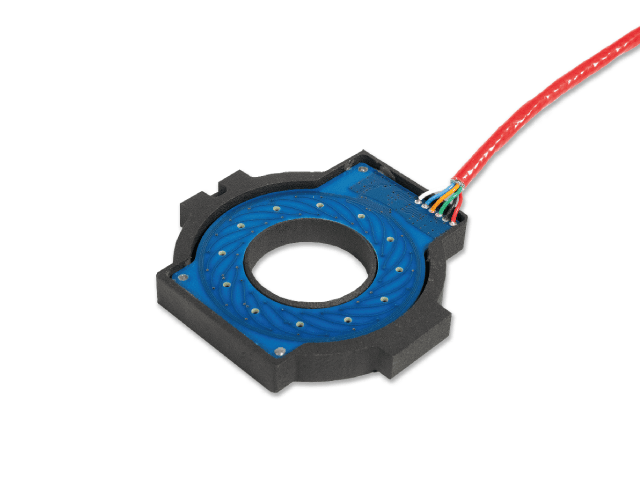Precise Motor Position Sensing for Electric Vehicles
 Optimizing power delivery to electric vehicle (EV) motors and sub-systems remains a focal point for developers and manufacturers worldwide. As power efficiency improves, EVs can drive further on a single battery charge, consequently lowering associated costs for the end-user.
Optimizing power delivery to electric vehicle (EV) motors and sub-systems remains a focal point for developers and manufacturers worldwide. As power efficiency improves, EVs can drive further on a single battery charge, consequently lowering associated costs for the end-user.
For that reason, precise monitoring of EV system performance is more important than ever, and to enable this, a range of sensors is implemented in electric vehicle architectures to measure the performance of the various engine constituents.
Increasing Energy Efficiency via Motor Position Sensing
A critical aspect to monitor is the position of the EV motor’s rotor which in combination with the stator generates the torque that propels the vehicle forward. By measuring the angular position of the rotor - and thereby calculating its rotational speed - crucial information about the motor’s operation is relayed to the EV control unit (EV-ECU).
With that information, the control system can deliver current appropriately, optimizing power consumption and smoothing acceleration and deceleration for an improved driving experience.
It also enhances several other electronic functionalities in the EV, such as regenerative braking and various safety measures.
Inductive High-Speed Motor Position Sensor for EVs
To help improve energy efficiency of EVs, CTS is introducing a new high-speed motor position sensor, designed specifically for electric engines. Replacing traditional resolver technology, this electronic resolver solution operates on the principles of induction sensing, generating two sinusoidal output signals (sine and cosine outputs) which together represent the angular position of the rotor.
This method of position sensing provides extremely precise readings, unmatched by any other type of motor position sensor. At speeds up to 240.000 e-RPM, CTS high-speed motor position sensor is accurate within 1° electric, and between 240.000 and 660.000 e-RPM, it achieves an accuracy of 3° electric, making it well-suited for all calibers of electric motors.
| Parameters |
Unit |
Min. |
Typical |
Max. |
| Supply Voltage |
V |
4.5 |
5 |
5.5 |
| Sensor Current Draw |
mA |
- |
16 |
20 |
| Measuring Range |
e-RPM |
- |
- |
660000 |
| Operating Temperature |
°C |
-40 |
- |
+150 |
| Differential Sine/Cosine Resolution |
Bit |
- |
12 |
- |
| Position Accuracy (≤ 240.000 e-RPM) |
°el |
- |
1 |
- |
| Position Accuracy (240.000-660.000 e-RPM) |
°el |
- |
3 |
- |
CTS eMobility Solutions
In developing the motor position sensor, CTS has taken several measures to maximize EV architecture compatibility and to reduce complexity during installation. The sensor is lightweight, resists magnetic stray field interference and can be configured with either differential or single-ended sine and cosine outputs. With customizable packaging based on application requirements and both through-shaft and end-of-shaft mounting configurations available, it is easily integrated in any electric vehicle architecture, saving OEMs time and resources during installation.
In CTS, we have made it our mission to facilitate the industry transition from ICE cars to EVs, making it as seamless as possible for developers, manufacturers and end-users alike. Our portfolio of eMobility solutions encompasses high-performing sensors, pedals and electronic components. Every product contributes to furthering the electrification of the transportation sector - whether by optimizing energy efficiency, reducing manufacturing and end-user costs, enabling new and better safety mechanisms or improving the overall driving experience by enhancing vehicle sub-systems.
Explore our eMobility Solutions HERE